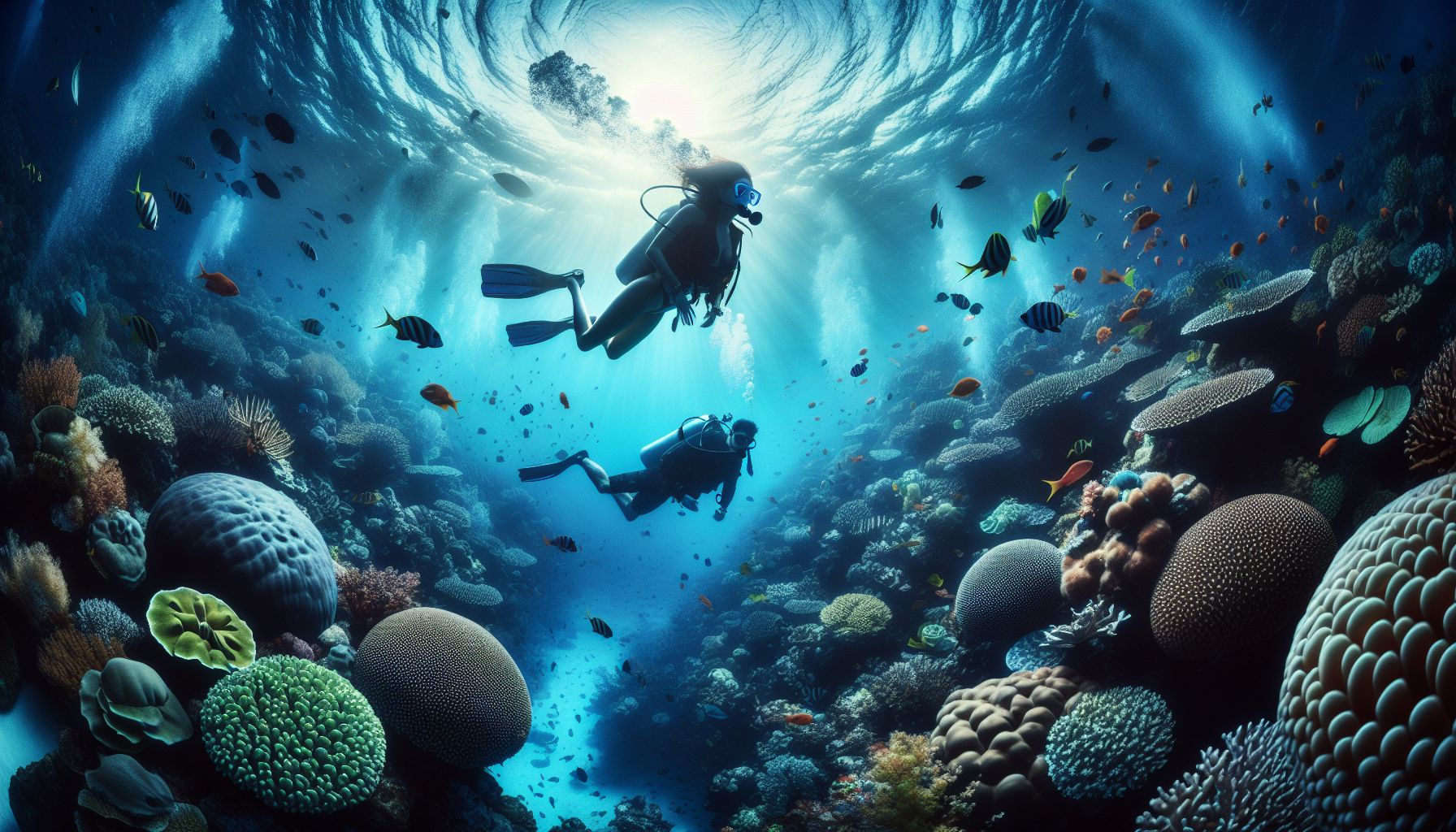Scuba diving opens up a dimension of the world that remains a mystery to many — it’s a ticket to a universe abundant with serene environments, vibrant marine life, and captivating remnants of bygone eras resting on the ocean floor. Its allure is not only in the visual and emotional experiences it offers but also in the diverse learning and environmental opportunities it provides.
In this article, we will explore the intricacies of scuba diving, what makes it an unforgettable experience, and why many describe it as an addictive hobby that keeps calling them back beneath the waves. We’ll cover everything from the basics of scuba diving, the equipment involved, certifications and training, dive locations, as well as conservation efforts and safety measures.
The Basics of Scuba Diving
Self-Contained Underwater Breathing Apparatus (SCUBA) diving is a form of underwater diving where the diver uses a breathing apparatus that is completely independent of surface supply, to breathe underwater. Scuba divers carry their source of breathing gas, which allows for greater freedom and maneuverability underwater compared to other forms of diving.
Getting Started
Before diving into the depths, one must get proper training. Scuba diving courses and certifications are available at different levels through recognized agencies like PADI (Professional Association of Diving Instructors), NAUI (National Association of Underwater Instructors), SSI (Scuba Schools International), and others.
- Open Water Diver: This entry-level certification equips you with the necessary skills and knowledge to dive with a buddy, independent of professional supervision.
- Advanced Open Water Diver: After the open water certification, you can expand your experience through different adventure dives like deep diving and underwater navigation.
- Rescue Diver: This level increases your problem-solving skills and helps you learn how to manage and prevent problems in the water.
PADI – Open Water Diver Course
NAUI – Get Certified
SSI – Open Water Diver
Equipment Essentials
To scuba dive, you’ll need the following essential equipment:
- Diving Mask: Provides an air space in front of the eyes to enable clear vision underwater.
- Snorkel: A tube that allows breathing while the face is submerged.
- Scuba Tank: A cylinder of compressed gas, typically air or enriched air nitrox.
- Regulator: Reduces the pressure of the gas from the tank and delivers it to the diver at ambient pressure.
- Buoyancy Control Device (BCD): Helps manage the diver’s buoyancy to hover, ascend, or descend underwater.
- Dive Computer or Depth Gauge and Timer: Helps monitor dive time, depth, ascent rate, and decompression limits.
- Fins: Aid in propulsion and maneuverability underwater.
- Wetsuit or Drysuit: Provides thermal protection.
- Weights: Help in achieving neutral buoyancy.
Popular Dive Locations
Scuba diving destinations vary from colorful coral reefs and bustling shipwrecks to tranquility-filled caves and eerie underwater statues. Some of the world’s most famous dive sites include:
- Great Barrier Reef, Australia: The world’s largest coral reef system is a diving mecca.
- Blue Hole, Belize: A massive marine sinkhole that offers a unique diving experience.
- Thistlegorm Shipwreck, Red Sea, Egypt: An iconic World War II shipwreck loved by history buffs.
- Silfra Fissure, Iceland: Dive between tectonic plates in crystal clear glacial waters.
When choosing a dive site, it’s important to consider your skill level and environmental conditions such as visibility, currents, and water temperature.
Conservation and Underwater Environments
As scuba divers often develop a deep love and respect for the ocean, many become committed to conserving marine ecosystems. Organizations and movements such as Project AWARE or The Ocean Cleanup engage divers and communities in activities aimed at protecting underwater environments.
Project AWARE
The Ocean Cleanup
Marine Life Interaction
Scuba diving allows remarkable encounters with marine life, but it is crucial to interact responsibly. Divers are taught to observe from a distance, to not feed or touch wildlife, and to be careful not to disturb delicate habitats.
Safety in Scuba Diving
Safety is paramount in scuba diving. The following are critical points for a safe diving experience:
- Never hold your breath while ascending, to prevent lung overexpansion.
- Always perform a safety stop, usually at 5 meters for 3 minutes, to reduce excess nitrogen in your body.
- Dive within the limits of your training and experience.
- Be familiar with your equipment and perform pre-dive safety checks.
- Maintain good physical health and fitness.
- Plan your dive and always dive with a buddy.
Conclusion
Scuba diving is much more than a sport or hobby — it’s an adventure that offers a different perspective on the world. By acknowledging the sport’s inherent risks and respecting underwater life and environments, divers of all levels can explore the depths confidently and safely.
With proper training, safety precautions, and an adventurous spirit, the underwater realm opens up a universe of wonder. Whether marveling at a kaleidoscope of coral, a majestic shipwreck, or simply feeling the weightlessness of being submerged, divers carry with them experiences and memories that last a lifetime.
Scuba diving isn’t merely about the thrill; it’s a journey into an enchanting world, a connection with nature, a path to self-discovery, and a continuous learning experience that never truly ends. As Jacques Cousteau famously said, “The sea, once it casts its spell, holds one in its net of wonder forever.”
